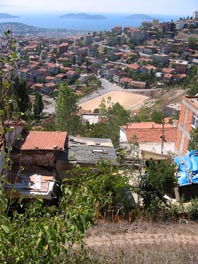The New Towns of the 20th Century were planned cities: they were built according to a blueprint designed by an architect or planner. From their inception, they were complete cities; rationally designed with a certain image of the city’s future in mind. They displayed a perfect equilibrium of infrastructure, housing, services and a social-economic and cultural identity. But what has happened after the planners departure? New plans are being made, the original design is being adjusted, inhabitants appropriate the city, and in short: the perfect equilibrium is shaken and the complexity of society takes over.
These initiatives after the planners have left are usually summarized as the ‘unplanned’, the ‘informal’ or the ‘self-organized’ city, definitions of varied phenomena which have, as a common denominator, the absence of professional planners. The unplanned city is made by inhabitants, entrepreneurs, developers, and immigrants. While the planned city corresponds roughly to a top-down approach, the unplanned city often displays a bottom-up approach.
Does this overruling of the planned city imply the failure of planning? Or is this appropriation, the so-called ‘unplanned’ additions and unforeseen use of the planned city actually the key to its success? Is it a sign of the maturation of the New Towns, of reaching the point where they become a normal and real city?
For the next generation of New Towns, which is presently on drawing boards from Western-Europe to China, to succeed and become whole, vital and socially sustainable cities it is of utmost importance to analyze the benefits both of the planned and the unplanned, of the top-down and the bottom-up, of the institutional and the self-organized. Is it possible to combine both sides in the planning of the New Towns for the 21th Century?
In this two-day conference INTI will explore the relationship between the planned city and the unplanned city in two ways: by looking at means of reanimation for existing New Towns and of anticipation for future New Towns to achieve programmatic, social and cultural change.
Thursday June 4th: Reanimation of old New Towns
On June 4th the conference will explore existing cities and analyse the ways in which New Towns have been taken by real life after the original plans have been built, and the unplanned city and self-organised building activities have decidedly changed and shaped the resulting city. Also, lecturers will analyze how these ‘old’ New Towns have been revitalized and regenerated in recent years and how the unplanned urban culture and inhabitants are included in this reanimation.
Plenary Session with Wolfgang Kil (Germany); Normalisation of planned communities and Urban Think Tank (Venezuela/USA); Rules and strategies of the informal city.
Friday June 5th: Anticipation of new New Towns
On June 5th the conference aims to acquire lessons for the future. This will be accomplished by speculating on how the planning of New Towns in the 21st Century can anticipate unplanned activities, be responsive to inhabitants’ input and to unexpected changes in political, economic or cultural context, thereby enriching both the planning profession and the city itself.
Plenary session with Margaret Crawford (USA); Everyday urbanism and Claudio Acioly (Kenya, Brazil); Informal Settlements & Brasilia.
Costs
Registration fee includes two-day conference participation with lunch and coffee breaks and a conference reader.
Participant fee is: € 200 for two days
Students/ PhD fee is: € 40 for two days, please include a copy of a valid student/ university card with your registration.
Click here for detailed program.
Click here for practical details (hotels, route, etc.).
Click for registration form.





